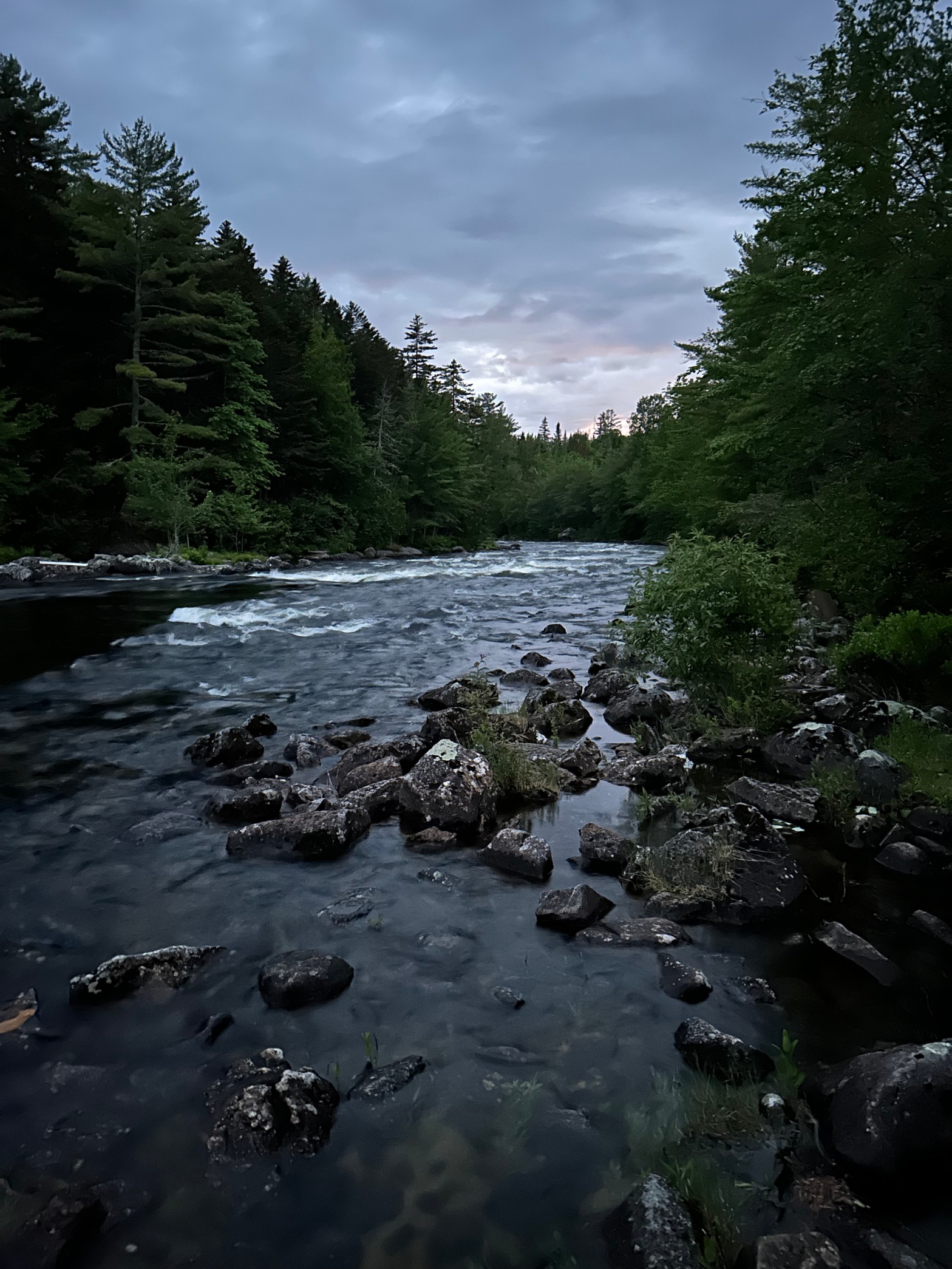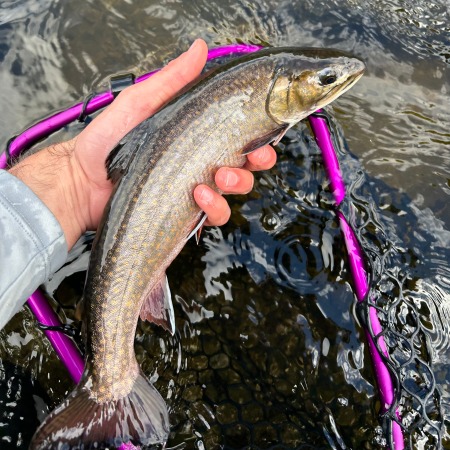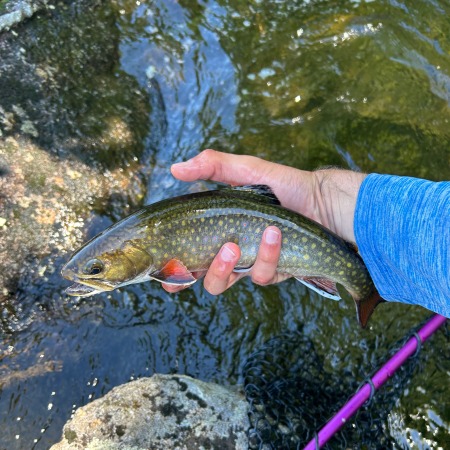It’s a murky line between work and play when you have a job at Lakewood Camps, but that’s just the way it should be. A dream job for an outdoors-obsessed teen such as myself, I was lucky to find myself working at the camps for a little over a week this June. Between learning valuable life skills on-the-job, catching big fish on the water, and enjoying amazing food and company in the kitchen, it was a week of hard work and carefree play.
Lakewood Camps
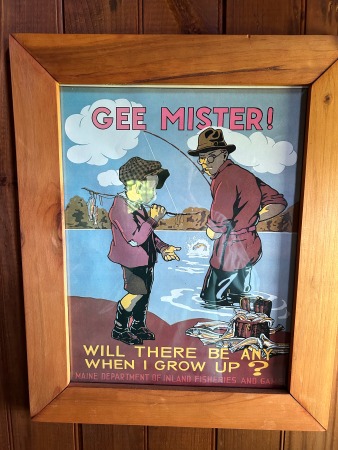
Established in 1853, Lakewood has developed a rich sporting history in its over a century-and-a-half of North Woods hospitality. That history is obvious, steeped in the slanted wooden floors, well-seasoned wood stoves, and vintage Maine Fish & Game posters. Those who visit Lakewood don’t do so for ritzy accommodations, but rather for its rustic feel and quiet, laid-back pace. In fact, the cabins guests stay in today are the same ones that have been used by guests for decades.
A large part of Lakewood’s charm comes from its remoteness. Tucked in the hills of Oxford County, getting to Lakewood is simply part of the adventure; thankfully, the process is stress-free and scenic. Although taking the maze of logging roads from Route 16 to camp is possible, the easiest route is by boat. Traversing the south end of Lower Richardson Lake, its hard not to marvel and the natural beauty of the western Maine landscape. If you’re lucky, you might even catch a glimpse of the numerous loons, bald eagles, and moose that frequent the lake.
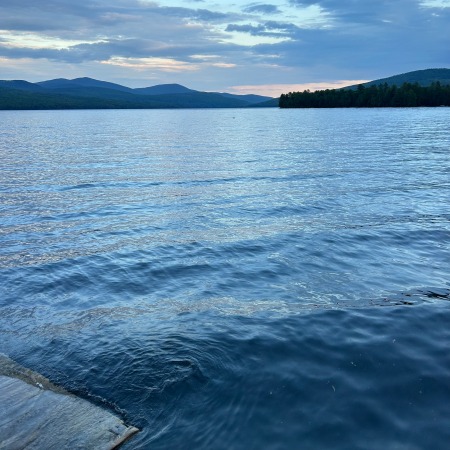
Despite its remoteness, you never feel alone at Lakewood. The camp staff are some of the kindest, most genuine people you’ll meet. For the most part, their personalities can be summed up in one very fitting word: Maine. It’s the common desire for adventure and pursuit of solitude that draws this tight-knit group of introverts into a family of passionate extroverts, each of whom care deeply about every guest’s experience. In fact, despite the fantastic fishing and delicious food, my favorite part of the experience was truly the brief conversations I shared with guests. Each person who journeys to Lakewood brings with them a wealth of stories and knowledge that can only be shared through face-to-face conversations, a rarity in our technology-driven world. But don’t worry – although spotty at times, Wi-Fi is still available, and the cell service is strong enough for most communication.
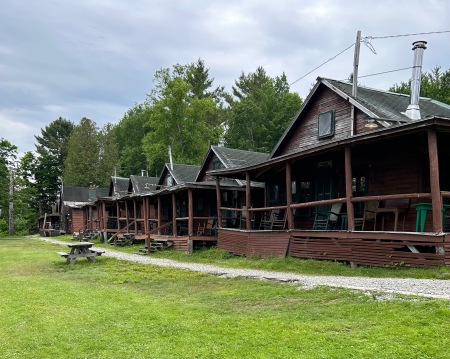
Fishing Overview
Although the scenery, camaraderie, and tranquility are nice, it is the fishing that brings most people to Lakewood (myself included, but don’t tell my boss). Having fished in the Rangeley Region for many years, I am well versed in western Maine’s legendary salmonid fishing. Yet throughout all my travels, it was perhaps the most storied Rangeley river of all that was left on my bucket list: the Rapid. Famous for its innumerable and outsized brook trout, it is widely agreed that the Rapid is the finest native, self-sustaining brook trout fishery remaining in the United States. With a repertoire as impressive as the Rapid River’s, I was skeptical that the fishing would actually stack up to its reputation. Somehow, it exceeded it.
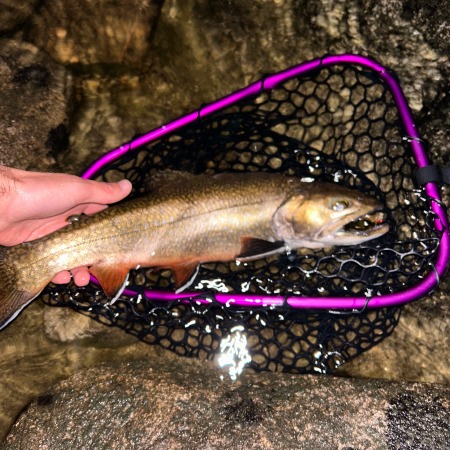
From my first casts to the last, the action was nonstop throughout the entire week. When I arrived late on Monday afternoon, I was left with a half-hour to fish at sunset that night. The river was flowing at 500 cfs, the perfect level according to Lakewood manager and Rapid River angler-extraordinaire, Billy. Chucking a meaty, six-inch articulated streamer, I quickly connected with two gorgeous brook trout in Harbeck Pool below Middle Dam. The second, a near 18-incher, was close to my longest brook trout ever. After those fish, any doubts I had about the quality of fishing in the Rapid were quickly dispelled.
Once I finished work in the afternoon of my second day, I was excited to get back to fishing and explore the river in daylight. As I neared the water, a menacing siren wailed from the dam, which could only mean one thing: more water. However, with the immediate success I’d had the night before, I felt that even in a flood-stage torrent, I could probably still find a fish or two.
That afternoon, I explored the river as it enters Pond-in-the-River, about a mile downstream of Middle Dam. Now running at 1,000 cfs, the river was certainly a bit higher, but still very fishable. This was some of the most interesting water I’ve ever fished, with varied currents and approaches available at each new bend. In fact, the three “rapids” where the river enters the pond have been given the very creative names of First Current (closest to the Carry Trail), Second Current (on the other side of the dividing island), and Third Current (below the stone “wing dam”).
Sketchy Wading
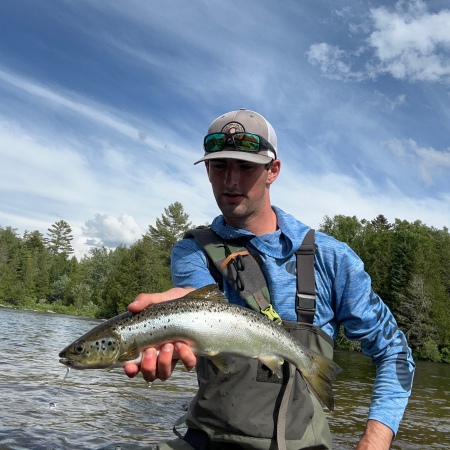
Being my first time at the spot, I stuck to the easy-to-reach sections: mostly First Current and Chub Pool, located just upstream. While I did find some luck that day, including some respectable trout and a nice salmon, it was really later in the week, after I started to get more comfortable with the water, when the fishing really picked up. As my confidence grew, so did the boldness of my wading, allowing me to reach spots few other anglers could. This was certainly a time when I was thankful for my young and spry body, because I definitely won’t be able to repeat many of those wading feats in a few years; in some cases, maybe I shouldn’t repeat them at all.
This wading confidence worked perfectly to my advantage until the end of the trip. One afternoon, as I began to cross First Current, working my way towards the island that divides First from Second, I began to notice more difficulty than I had the past few days. My steps felt clumsier, and the water seemed more forceful against my weary legs. At times the current would begin to lift me up until I jammed by boots or knees into an underwater boulder. The wading was tough, to say the least. Thankfully I made it there and back, but not without some difficulty and a healthy dose of fear.
As the camp staff and guides ate dinner that night, Bob Duport, the most experienced guide of the bunch, complimented me on my wading. I was flattered, but felt the compliment was unwarranted; after all, I had been stumbling through the river like a blind ape all afternoon. “Sure, it wasn’t the most graceful wading,” he admitted, “but it was pretty damn good for 1,600 cfs.”
1,600 cfs?!! I had just assumed the river was running the same 1,000 cfs it had been all week. While I was happy to have made the trip without so much as a dunk, and frankly to be alive, it was certainly a lesson in preparedness and the dangers of risk-taking. The next day, I was lucky enough to use the camp’s drift boat to access spots instead of doing the hard work by foot.
More Fishing . . .
Beyond the difficult wading, I did find the fishing to be difficult at times. Selecting the right method and fly was a matter of carefully examining the conditions and the type of water you were fishing. When the river was high, the wind blowing, and the bug activity quiet, it took some work to find the fish. During these times, I found most success with deep nymphs or streamers. In fast, choppy runs, a modified tightline technique with my five weight and a team of nymphs (something like a heavy stonefly and a slimmer Walt’s Worm) produced some nice fish. In slightly calmer riffles and pocket water, I attached a bobber or fished a mid-sized streamer.
When the fish were happy and rising, they would selectively take most topwater offerings. In fast water, I had fun throwing a dry-dropper rig with a small Chubby Chernobyl up top and a Higa’s SOS below. In more moderate current, the viscous takes on a pair of swung wet flies were enough to keep tying them on, even after numerous break-offs on botched hook sets. In slower water, especially in the bigger pools, a Parachute Adams was often the ticket.
One day, I spent a full afternoon at the “Kiddie Pool” along the side of Middle Dam, catching fish after fish on a single disheveled Adams. Most were cookie-cutter salmon, so eventually I wanted to change my fly to see if I could find some new species. As I prepared to cut-and-retie, I noticed some chafing along my tippet. I decided, “What the hell? Why not catch one more fish, and if it breaks me off, then that was the goal anyway.” Stupid idea.
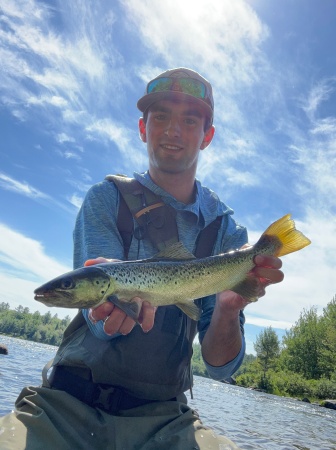
Of course, on the very next cast, the largest brook trout I’d see all trip gently sucked down the crippled dry fly. I stuck the hook set, but knew it was no use: in a matter of nerve-wracking minutes, the beast had worn down the weak tippet to its final fibers, eventually severing it in a final dive towards the sharp underwater rocks.
My top producing fly of the week, regardless of the fish activity level, was a streamer of my own design called the SPF 40. This fly was initially tied to imitate the plentiful perch fry that smallmouth bass gorge on in Sebago Lake throughout August (hence SPF: Sebago Perch Fry). Thankfully it does a fantastic job of imitating forage in other waters, including the perch and smelt in the Rapid system. It is best fished on a sink-tip line (I usually use a sinking poly leader on my five weight) and in bright conditions. Stripped or dead-drifted, this fly is a killer for any species (it caught all four species in the Rapid – twice in one day!).
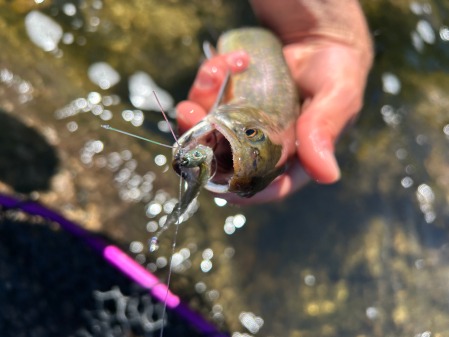
Interestingly, I found that certain styles of flies were more likely to catch certain species. For example, of all the fish I caught on streamers, I only caught one salmon – and it was while the streamer was dead-drifting under a bobber. Most streamer-eaters were brook trout, especially on the bigger patterns. Nymphs caught a mix of salmon and trout, while dries were usually more likely to yield a salmon.
Until Next Time
Having spent nine days at Lakewood, I began to really appreciate the simplicity of camp life when it was time to leave. Sure, 24/7 power and access to a gym is nice, but nothing beats disconnecting with technology and reconnecting with nature and fellow outdoor enthusiasts. While my time at Lakewood had come to an end, it was really the end of a beginning; now, I’m counting down the days until my return to the the evergreen mountains, quaint cabins, rushing river, and enormous brook trout. Until next time, Lakewood.

